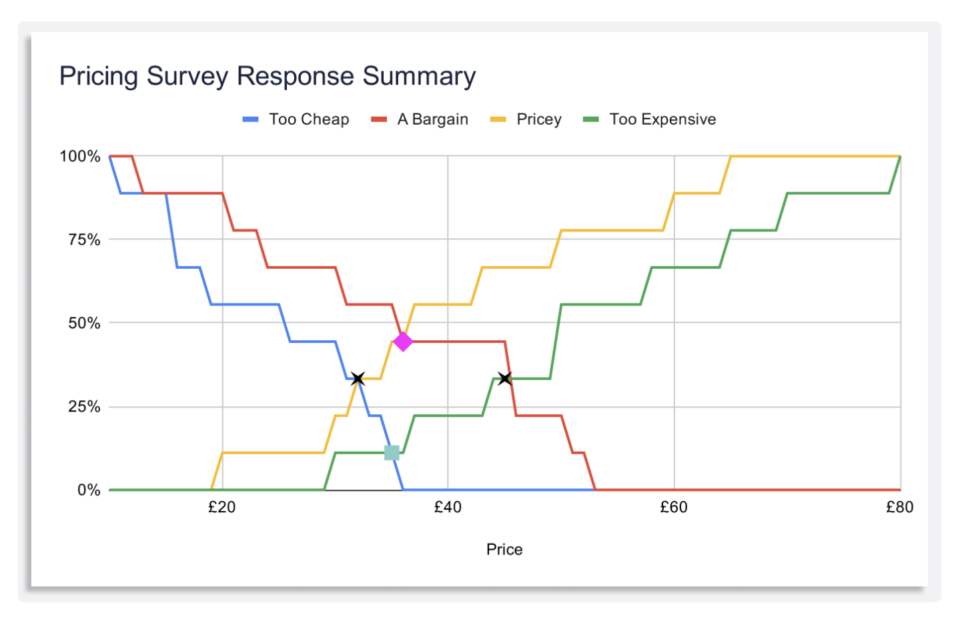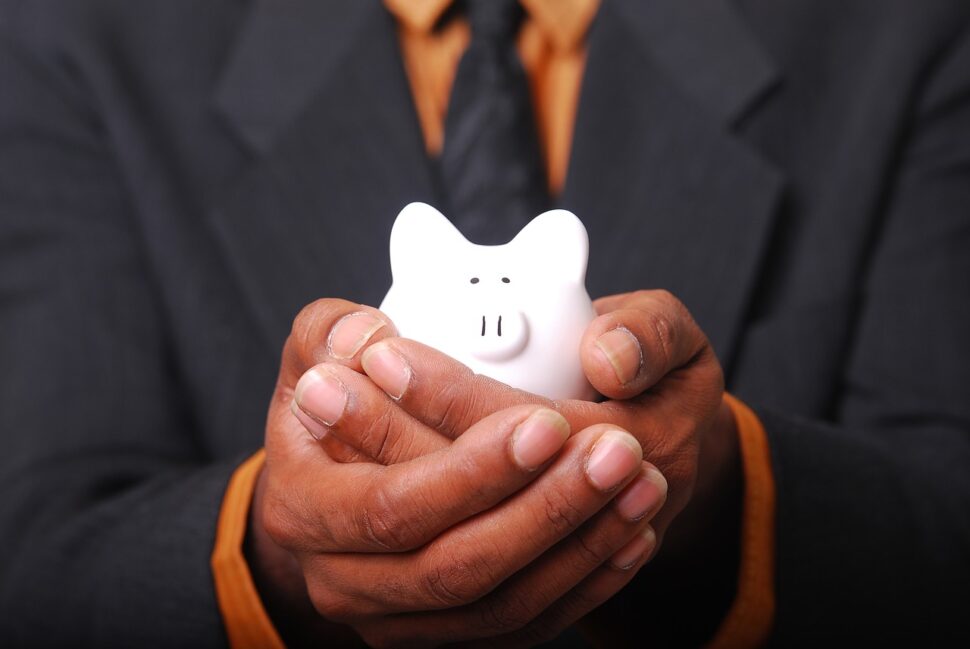Understanding price sensitivity will help guide the many decisions you have to make as an e-commerce seller, entrepreneur, or retailer.
After all, pricing your products and services is one of the more anxiety-inducing aspects of running a business. Prices are something you and your customers are always thinking about.
So what is pricing sensitivity? How can it prepare you to weather the challenges of business and better serve customer needs? Let’s get into it.
What is pricing sensitivity?
Price sensitivity describes the relationship between the price of a product or service and a consumer’s desire to buy it.
If you increase the price of a product and discover that people will still pay for it, the product has low price sensitivity.
If you increase the price and customers decide to seek out the same product elsewhere, the product has high price sensitivity.
Say a coffee shop sells a latte for $3.25. The coffee is good, but it’s not the best of the best. Still, thanks to its low price, the shop gets plenty of business, especially around 6 a.m. as people head to work.

Now let’s say this coffee shop tries to capitalize on its success by raising the price of all its espresso drinks.
Instead of $3.25, a latte now costs $3.90. The owner hangs a small sign on the window explaining why prices have gone up.
Unfortunately for this owner, the coffee shop across the street sells its lattes for $3.75 each — coffee that’s just as good. You know the rest.
As you dive into the ever-changing waters of the business world, it’s important to understand the factors that influence price sensitivity.
What influences price sensitivity?
Let’s look at three factors that play a role in price sensitivity.
1. Income
Products aimed at customers with a higher disposable income, such as brand-name handbags or shoes, tend to be less price-sensitive.
For budget-conscious shoppers, on the other hand, a product’s brand name and quality are less important than making sure their dollars cover all their needs. If the price of a product they need goes up, they’ll probably shop around for a lower price.
2. Price anchoring
Say a shopper sees a bag of chips on sale for $4 from one brand. That price sticks — or is now anchored — in their mind. They’re not likely to buy a similar bag of chips for $10 from another brand. That’s the basis of price anchoring.
Whatever price a person sees or hears first for a particular product becomes the reference price against which they compare all other prices.
Staying within the price anchoring range can help temper price sensitivity.
3. Culture
Price sensitivity also varies in different countries based on cultural factors.
Mobile apps have a higher price sensitivity in countries that value masculinity and tend to avoid uncertainty, such as Italy and Malaysia, than in other countries, one study of app popularity found.
4. Buyer intent
A parent intent on buying their child a high-quality toy for the holidays will have lower price sensitivity than a parent dropping by the dollar store on an ordinary weekday to pick up a surprise gift for their kid.
As you can see, pricing sensitivity is a fluid concept that’s worth researching in your particular community or country.
How does elasticity of demand affect pricing?
Elasticity of demand refers to how demand does or does not respond to changes in the economy, a shopper’s income level, or the price of a product.
Price elasticity of demand refers to how price changes affect demand in particular. It’s often used to measure price sensitivity.
A product that is considered elastic is one that experiences a noticeable change in demand when the price fluctuates. An inelastic product experiences less of a change in demand.
For example, gas prices are often the same in a certain area because most consumers are not willing to pay extra when it comes to gasoline, not if there’s a cheaper alternative around.
If gas prices shoot up, consumers tend to carpool more or limit their car rides. This makes gasoline extremely price elastic and price sensitive.
Measuring price elasticity of demand helps sellers understand the price sensitivity of a certain product or service. This information can guide you in making smart decisions when it comes to pricing your goods.
What is Van Westendorp’s Price Sensitivity Meter?
The Van Westendorp Price Sensitivity Meter, also called the Van Westendorp pricing model, is a strategy for setting the price of a product based on the emotionally acceptable price range.
Dutch economist Peter Van Westerndorp introduced the concept in the 1970s.

The Van Westendorp model revolves around consumers’ responses to a set of survey questions about how they perceive the price of a product or service. The questions ask for the specific prices at which consumers think something is cheap, too cheap, expensive, and too expensive.
The data, when plotted out on a line graph, can help determine an acceptable price range and the ideal price for a product.
The 4 Van Westendorp questions
Let’s say you’re trying to determine a good price for a high-quality sketchpad you sell.
You would ask your target market these four questions (or something similar):
- Too cheap: At what price would you consider the sketchpad to be so low that you’d question its quality?
- Cheap: At what price would you consider the sketchpad to be a good deal for the money it cost?
- Expensive: At what price would you consider it starting to get expensive? You might buy it but would have to give it serious thought.
- Too expensive: At what price would you consider the product too expensive for you to buy it?
You’d compile the responses and plot them on a line graph, which will give you a solid picture of an acceptable price range for the sketchpad.
The intersection between “too cheap” and “expensive” is the low end of your ideal price range, called the Point of Marginal Cheapness (PMC).
The intersection between “cheap” and “too expensive” is the Point of Marginal Expensiveness (PME).
The point at which “too cheap” and “too expensive” cross is called the Optimum Price Point (OPP). In theory, this is your ideal price. However, you’ll want to run tests with your customers and do more analysis to determine the optimal price.

The Van Westendorp Price Sensitivity Meter has helped scores of brands over the years. It can help you gauge price sensitivity by showing you what different portions of your target audience would be willing to pay for your product.
Why should I use the Van Westendorp pricing model?
There are several scenarios where the Van Westendorp pricing model would make sense and other cases in which Van Westendorp’s meter may not be your best pricing assessor.
Let’s start with the scenarios where the Van Westendorp pricing model would be helpful.
Introducing a new product
Are you opening a new sandwich shop in town? To understand what your customers would pay for your signature sandwich, send out a survey asking the crowd your Van Westendorp pricing questions.
Most people have an idea of what a sandwich is worth and how much they’re willing to pay for one. Their answers will give you confidence that they’ll be willing to purchase your sandwiches.
This strategy would be useful when bringing any new product to market.
Changing your pricing strategy
If you’ve had your sandwich shop open for years but need to change things up, including the prices, the Van Westendorp model can help you analyze your customers’ current attitudes toward your pricing.
This information can help you make a pricing change that will maximize your revenue while keeping your customers happy.
Changing product features
You almost always notice when a cereal brand suddenly announces on the box that they’re selling you 25% more cereal for the same great price.
What about when they sell you 10 or 15% less cereal for the same great price?
This type of product feature change happens all the time. Using the Van Westendorp Price Sensitivity Meter to survey your customers can help you understand price sensitivity relative to changes you want to make to your product.
Why should I not use the Van Westendorp pricing model?
The Van Westendorp Price Sensitivity Meter assumes that your audience has some idea of the value of the product before they answer your questions about whether it’s cheap or expensive.
Because you are asking only about the price, customers may not know about all the features or benefits of a product. They don’t know how much it costs you to make the product, either.
Before you run a Van Westendorp survey, you may want to do the research to figure out your costs and determine at which price you could accept selling the product or service

Once you know this information, send out those survey questions using the price points you’ve deemed acceptable. This will help the Van Westendorp pricing model reflect the true value of your product.
Price sensitivity and PickFu
Some market research platforms like SurveyMonkey, Conjoint.ly, and SurveyKing have built-in tools or templates to do a Van Westendorp survey. As with most enterprise-level platforms, you can expect to spend considerable time and money doing the survey and analysis.
If you want to run a Van Westendorp analysis to gauge price sensitivity but you’re intimidated by the process or the price, PickFu can help.
With PickFu, you can survey a panel of 50 or more consumers, starting at $1 per response. The platform lets you choose respondents according to demographics and other traits.
Are you opening that sandwich shop in an area with lots of young families? You can target a specific audience of parents for your PickFu poll.
Run an open-ended poll with an image of your product and ask the four Van Westendorp questions in abbreviated form.
Label each one with a letter, like this:
- A: At what low price is this product low quality?
- B: What is the bargain price for this product?
- C: At what high price would you hesitate to purchase it?
- D: At what price is it too expensive?
Your respondents will answer the questions. Then, you can enter the data into a line graph and figure out an acceptable price range for your product.
In this way, PickFu can be an ideal price sensitivity analysis tool. It’s essentially Van Westendorp on a budget, helping you gauge what your ideal customers are willing to pay for your product.
Check out our guide to DIY market research for more research techniques that will help you understand your customers better.





